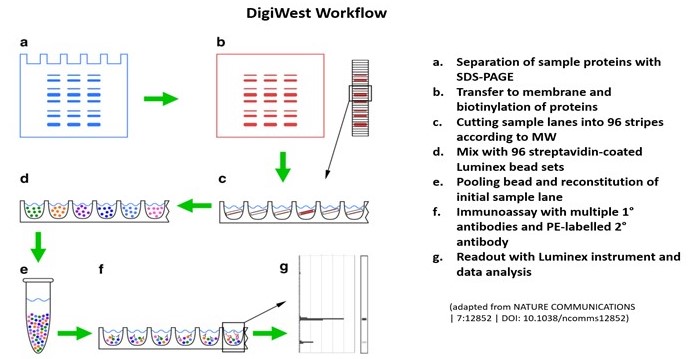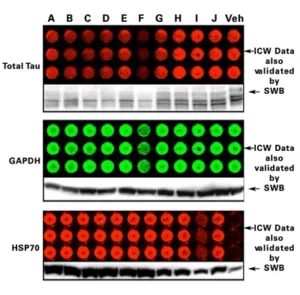Western blot
Simple Western (Automatic Western)
We provide advanced Western blot solutions designed to support protein degrader discovery and targeted protein research. Our services combine sensitivity, flexibility, and validated workflows to deliver accurate and reproducible results across a wide range of applications.
Key Capabilities:
💠Quantitative analysis of proteins across a broad size range (2–440 kDa)
💠Reliable detection in limited samples (as few as 25 cells), ideal for stem cells, bone marrow cells, and sorted populations
💠Access to over 3,000 validated antibodies for robust protein quantitation
💠Real-time toxicological and PK/PD monitoring in experimental models
💠Monitoring of signaling transduction events to accelerate drug discovery
💠Discovery and validation of biomarkers for predictive and companion diagnostics
💠Characterization of monoclonal and polyclonal antibody binding affinities
💠Specificity testing of antibodies to confirm target engagement

Specialized Applications:
💠Characterization of purity and charge heterogeneity in biopharmaceuticals
💠Phospho-protein profiling and post-translational modification analysis with pan or isoform-specific antibodies
💠Screening of test compounds for effects on expression, degradation, or modification of key proteins
Traditional Western
Traditional Western blot platform leverages high-quality pre-cast gels (SDS-PAGE, Native-PAGE, etc.) and well-validated antibodies to deliver high-resolution and reproducible results across multiple experiments. Using Li-Cor Odyssey Near-Infrared Imaging, we achieve greater sensitivity, wide dynamic range, and dual-color (green/red) detection, enabling precise quantification that outperforms conventional chemiluminescence methods.

Representative Western blot analysis using Li-Cor Odyssey Near-Infrared Imaging.
Dual-color detection (red and green) enables simultaneous visualization of multiple proteins, including β-Tubulin, β-Actin, GAPDH, and GST, with high sensitivity and quantitative accuracy. This approach demonstrates the platform’s capability to deliver precise, reproducible protein expression data across a wide dynamic range.
Digi-Western
DigiWest® Antibody-Based Microarray Platform
The DigiWest workflow combines SDS-PAGE protein separation with Luminex bead-based multiplexing, enabling high-throughput and quantitative analysis of proteins and phosphoproteins. This powerful platform allows:
💠High-resolution profiling of hundreds of proteins and protein modifications in complex samples.
💠Parallel analysis of up to 600 proteins (including phosphoproteins) from as little as 50 µg of sample (cells, tissues, etc.).
💠Broad applications in biomarker discovery, pathway mapping, drug mechanism-of-action studies, and lead compound characterization.
By integrating molecular weight resolution with multiplex bead-based detection, DigiWest provides exceptional sensitivity, reproducibility, and throughput for systems-level proteomic research.

The DigiWest workflow enables high-throughput, multiplex protein analysis by combining SDS-PAGE separation with bead-based immunoassays. This powerful platform allows the simultaneous quantification of hundreds of proteins and post-translational modifications from minimal sample input, delivering sensitive and reliable insights for biomarker discovery, pathway analysis, and drug development.
In-cell Western
ICW assay combines the specificity of Western blot with the throughput of ELISA, providing a powerful and cost-effective method for quantifying intracellular signaling in whole cells. Using 96- or 384-well plate formats, this assay enables high-throughput analysis of protein phosphorylation, caspase-3 activation, receptor internalization, and other key cellular processes.
The Odyssey® Imaging System ensures sensitive detection with infrared-conjugated antibodies and DNA dyes, supporting precise measurements of signal induction or inhibition across multiple treatments and replicates. This platform is ideal for drug screening, pathway analysis, and large-scale cellular studies.

This image demonstrates the use of In-Cell Western (ICW) assays for quantitative detection of target proteins in a high-throughput plate format. Shown are results for Total Tau, GAPDH, and HSP70, with ICW signals validated against standard Western blot (SWB) data. The results highlight the assay’s accuracy, reproducibility, and ability to deliver multiplexed protein analysis across multiple samples simultaneously.